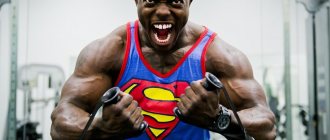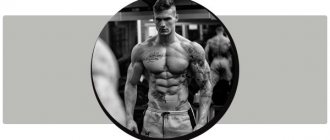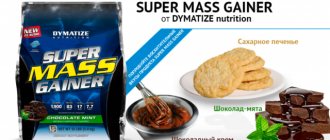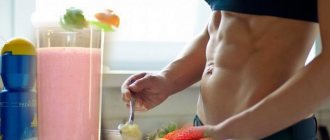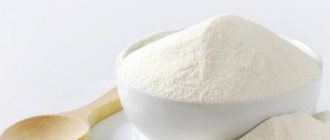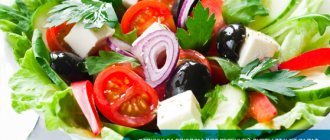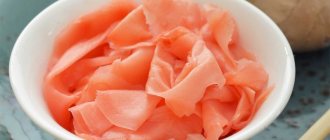Basic amounts of proteins, fats and carbohydrates
Like many other aspects of muscle hypertrophy, these numbers are debatable. Some people agree with them, others don't, but they can be used as a guide, and it worked for me. So, the basic amount you need to aim for on a daily basis is:
- Proteins: 1.5 - 2.5 grams per kilogram of body weight
- Carbohydrates: 5.5 grams per kilogram of body weight
- Fat: 0.5 grams per kilogram of body weight
So let's turn to my 200 pound man who wants to build muscle. Using the numbers above, he needs to eat 135-225 grams of protein, 500 grams of carbohydrates and 50 grams of fat per day.
Basic principles of dietary nutrition
There are a number of rules and recommendations that guarantee maximum effectiveness of a sports diet for gaining muscle mass.
Fractional meals according to the regimen
Fractional meals (up to 6 times a day in small portions) have a positive effect on the functioning of the digestive system. At the same time, all the nutrients necessary for the muscles enter the blood throughout the day. The diet consists of main meals (breakfast, lunch and dinner), followed by a snack 2-3 hours later.
Calorie foods
Approximately 60-70% of the diet should consist of high-calorie foods, and fruits and vegetables rich in fiber should not exceed 30%. Fiber is not digested, it only stimulates intestinal contractions; if it is in excess, some of the high-calorie food will not have time to be absorbed.
The role of carbohydrates and fats
So-called fast carbohydrates are quickly absorbed from the digestive tract into the blood, sharply raising sugar levels. Under the influence of insulin, glucose spreads throughout the body's cells, providing them with energy. And the remainder that is not useful is converted into fat and accumulates.
Along with excess sugar, unused fats are also deposited. Fast carbohydrates are indicated only after training, when the body is ready to actively utilize glucose. The rest of the time, give preference to slow carbohydrates and minimize fat.
Drinking regime
During the diet, do not limit yourself in the amount of liquid you drink; the average norm is 3 liters.
Proper alternation of physical activity and rest
Muscles grow not during work, but during periods of rest. A competent recovery regimen combined with proper nutrition will bring you closer to your goal step by step.
Nutrition before and after workouts
Hunger is the enemy of sports. During training on an empty stomach, the body lacks energy and is forced to actively deplete reserves of valuable protein. This is bad for muscles. Therefore, an hour before class, it is recommended to have a snack with something carbohydrate. If the food is protein (which some diets require), you need to eat 1.5-2 hours before training so that the stomach has time to empty.
After training (after 15 minutes), give the body energy, vitamins and proteins for “construction”. The best option is a protein-carbohydrate cocktail.
Important! Any nutritional method requires strength training. Otherwise, fat will appear instead of muscle. If after 1-2 weeks the effect is not noticeable, the diet needs to be adjusted.
What does this mean in terms of calories?
Here's what the grams to calories conversion looks like for protein, carbs, and fat.
- Protein – 4 calories per gram
- Carbohydrates - 4 calories per gram
- Fat - 9 calories per gram
So, going back to our 200 pound person, he needs to consume 3,350 calories per day. This figure can be used as a starting point for a person of his size to develop a menu for the month and gain weight.
Correct proportions of macronutrients
Macronutrients are nutrients that need to be supplied to the body in large quantities: carbohydrates, proteins and fats. You should calculate the optimal proportions of macronutrients according to your fitness goals: build muscle or burn fat. In simple words, this ratio is affected by:
- Your Body Type: Some people are more likely to be overweight than others. They need to reduce their intake of carbohydrates and fats more than others who want to “pump up”.
- Your fitness goal: Those working on relief are shown a different ratio of macronutrients compared to those gaining muscle mass.
- Your gender: Genetically, men are better suited to building muscle than women.
Proportions of macronutrients depending on fitness goals
This diet is based on a universal ratio of macronutrients for any of the tasks: mass gain, cutting and weight maintenance. As stated before, we all have different body types, so you will have to adjust these proportions yourself to achieve maximum results.
The following macronutrient ratios are recommended:
- Muscle building: carbohydrates – 40%, proteins – 40%, fats – 20%
- Weight retention: carbohydrates – 35%, proteins – 35%, fats – 30%
- Relief: carbohydrates – 30%, proteins – 40%, fats – 30%
Healthy fats
“Should I cut out fats if I’m going to get lean?” Good question. There are actually several types of fats. Some of them are harmful, while the body cannot do without others. To burn fat in the body, you not only need to create a calorie deficit, but adding omega-3 polyunsaturated fats will help improve the process of using subcutaneous fat as an energy source.
The benefits of foods are not a decisive condition for proper nutrition.
These days, a healthy diet involves eating foods that are low in fat and high in micronutrients: vitamins and minerals. Indeed, vitamin-rich foods provide health benefits. However, even when eating exclusively healthy food, you may not get the desired result if the total calorie intake is not normal. Sounds fair, doesn't it?
In other words: calories are calories. You need to focus on macronutrients first, no matter how healthy your sources are. You can't argue against science!
Eating frequently will make you feel better
Usually people who have tried many diets in their time have not lasted to the end on any of them, because this is a difficult task. Most of them are based on the introduction of food restrictions. Therefore, eating an extra grain of rice makes you feel guilty. However, the ability to meet your daily macronutrient intake is much more important.
Both when gaining muscle mass and when eating for relief, we will focus on 3 main meals and 1-2 snacks. But it is acceptable to gain the required amount of calories in fewer meals, this is not so important.
Why? Because 3-4 meals a day will allow you not to feel hungry and will reduce cravings for junk food. The proposed nutrition plan for men will serve as an example that you can adapt to your daily routine. Don't forget to snack between main meals, and monitor your macronutrient levels!
How many times a day and at what time should you eat?
The frequency and timing of meals are as important as what to eat. It is important to break out of the captivity of the stereotype called “3 meals a day.” It is preferable to eat 4-7 times a day at intervals of 3 to 4 hours. I know that for most people this is quite difficult due to work, study, etc., but you should try to eat often and in small portions if possible. If the king of bodybuilding, Ronnie Coleman, can work out a full-time job and still stick to a bulking diet, then so can you!
Ideally, each meal should contain a certain amount of protein, fat and carbohydrates. It's easy to figure out how much of what should be in each of them. Simply take the total number and divide by the number of meals you plan to eat during the day. Let's say my 90 pound man eats 6 times a day. Each meal should contain about 33-50 grams of protein, 80-85 grams of carbohydrates and 8 grams of fat.
You should try to eat 1 time 1 hour before training (to have energy for exercise) and 1 time after training (nutrients for muscle recovery).
For guys with a thin build
If you are naturally thin and have a fast metabolism, I would recommend adding carbohydrates to your diet for more calories and increasing the amount of high-calorie foods in your diet.
Learn more about how to bulk up an ectomorph and make your muscles grow.
I am a real hard gainer, with natural thinness and a reactive metabolism. While this has its benefits (like burning fat), it also means I need to eat more calories to gain weight. Read the article about nutrition for ectomorphs, there is a lot of useful information on the topic. If you have the same body type, you need to literally eat as many carbs as you can.
Easy, isn't it?
That's all, actually. This is the easiest way to plan a diet to gain weight. There are many other aspects of diet and meal planning (such as sports supplements), but I did not touch on them in this article, but tried to address the simplest things.
Basic Rules
Meals for gaining muscle mass for men should be high in calories, so the amount of nutrients obtained from the diet should exceed those consumed during periods of intense training.
Some athletes (especially beginners) are afraid to gain excess fat along with muscles. Of course, there is always the possibility of an additional layer of fat appearing during the active mass gain stage. It is extremely difficult to avoid this. However, you can give your muscles a beautiful definition later with the help of a carbohydrate-free diet (“drying”).
Some athletes take a different path - their diet for gaining weight is initially “dry” - that is, they simultaneously build muscle and get rid of fat. Although this approach has obvious advantages, it overloads the body - the body is subjected to daily high-intensity training in a calorie (and, therefore, energy) deficit. With an improperly organized diet for men, “gaining lean mass” can harm the body of athletes.
The first thing that is recommended for athletes who are targeting nutrition to gain weight is to introduce two additional meals into their regime.
For example, three meals a day (breakfast, lunch and dinner) are supplemented with two carbohydrate snacks (second breakfast and afternoon snack) and a glass of protein shake before bed.
This approach will help increase the total daily calorie intake and “accelerate” metabolism.
The advantages of such nutrition for an athlete for weight are obvious:
- There may be significantly more food than the athlete is accustomed to eating during the day;
- You can increase the number of meals from 6 to 10. This will evenly distribute the intake of amino acids and other nutritional components into the body throughout the day and speed up metabolism.
To gain quality mass, an athlete needs to eat every two to three hours - this can be either a full meal or a snack.
So, the first two requirements that should be adhered to while gaining muscle mass were discussed above:
- Increase in total daily calories;
- Correction of diet (the number of meals increases from 6 to 10).
Now it is necessary to pay attention to one more important point - changing the structure of an athlete’s diet when training to gain weight, that is, correcting the ratio of proteins, fats and carbohydrates (hereinafter referred to as BZhU).
Optimal proportions:
- Proteins – 25-30%;
- Fats – 10-15%;
- Carbohydrates – 50-60%.
This ratio is considered not only “healthy”, but also useful for anabolism (increasing muscle mass). This structure is designed to provide the body with a sufficient amount of amino acids (“building materials”), as well as to give it the necessary energy while “supporting” a minimum amount of vegetable fats.
Weekly Budget Meal Plan for Muscle Growth
Gain muscle and save money with this 7-Day Budget Eating Plan. In order to afford a nutritious and tasty diet for building muscle mass, you do not need to have an income like an oligarch. This seven-day plan provides you with the protein you need for muscle growth, the carbs you need to power through your toughest workouts, and the fats and vegetables for optimal health, all on a budget. Instead of slabs of expensive ribeye and chicken breast, it features pork steaks, chicken thighs and turkey burgers, which have all the same things, but are much cheaper. Here are three more tips that can help you get more for less.
Buy groceries for the week
If you buy food for the week ahead, you save time, and in some supermarkets you can get food at wholesale prices with a discount. Instead of buying the necessary groceries every night on the way home, buying a batch of chicken thighs, canned tuna and nut butters can cut your costs by almost half. Try to buy all this on the weekend so that you can immediately unpack everything and put it on the shelves without cluttering the refrigerator.
Prepare meals for the whole day, or better yet, for a week.
Now you have the ingredients, which means it’s time to start cooking. Take one day and prepare enough meals to last you a week. Stews, casseroles and burgers can easily be portioned into meal portions and defrosted as needed, saving you time at the stove after a hard day at work. The main thing is not to eat everything at once.
Better frozen than fresh
Stock up on frozen fruits and vegetables in your freezer. The freezing process preserves all the essential nutrients and flavor, and frozen foods tend to be cheaper than fresh—plus, they obviously last much longer. Frozen berries are good to add to porridge and smoothies. Take them out in the evening to eat at breakfast, defrost them in the microwave at low temperature, or you can also pour boiling water over them, add fresh lime and a teaspoon of honey and make a delicious compote for oatmeal at home.
Now let's look at the diet for rapid muscle growth.
Diet for muscle growth for 7 days
Monday
- Breakfast – Boiled eggs with spinach garnish
- Lunch – Whole grain pita with tuna, red onion and tomatoes
- Snack – Greek yogurt with frozen berries
- Dinner – Steamed salmon, broccoli and sweet potatoes
Tuesday
- Breakfast - Oatmeal with milk and banana slices
- Lunch - Thai coconut milk curry with shrimp, frozen peas, corn and brown rice.
- Snack – Liver with onions
- Dinner – Grilled pork steaks with chopped tomato sauce, spinach and green beans
Wednesday
- Breakfast – Smoothie with milk, frozen berries, Greek yogurt, honey, peanut butter and whey protein
- Lunch – Mackerel with tomatoes, onions, zucchini and carrot salad
- Dinner – Chili with beans, brown rice and green beans
- Snack – Chocolate milk
Thursday
- Breakfast – Grilled sausages and three-egg scrambled eggs
- Snack – Peanut butter, pita, apple
- Lunch – Leftover chili with sweet potato puree
- Dinner – Chicken thighs fried with garlic puree, lentils and zucchini ratatouille
Friday
- Breakfast - Three egg omelet with mushrooms, leftover chicken
- Lunch – Pita with salmon and cottage cheese
- Snack – Carrot sticks (or hummus)
- Dinner – Stew with mushrooms, broccoli and cabbage
Saturday
- Breakfast - Porridge with banana puree, apple, honey and berries, sprinkled with almond crumbs
- Lunch – Ham, brown rice, peas and corn
- Snack – Cottage cheese and pita
- Dinner – Shrimp and mussel pie with sweet potato, kale and green bean puree
Sunday
- Breakfast – Sausage, broccoli and frittata
- Snack – Peanuts and apples
- Lunch – Turkey burgers (ground turkey and chopped onions)
- Dinner – Slow-cooked lamb neck, roasted sweet potatoes, carrots and peas
Other nutrition tips for gaining weight:
- Make yourself a meal schedule. The problem with many thin people is that they don't eat enough. A meal schedule is a huge help in gaining a certain weight, you can watch and add additional nutrition there as needed.
- Your body needs time to adjust to a more consistent eating schedule. You will snack more often, this is normal. Try to do this even if you are not very hungry.
- It is very important to drink a lot of water when you start eating more. Water helps distribute nutrients throughout the body, and weight will definitely be gained in the form of water.
Mass-gaining nutrition for skinny guys
This nutrition plan is designed for men who want to gain muscle mass. Check out this ectomorph workout program that works well for skinny guys.
Nutritional value: 3000 calories, 300 g carbohydrates, 225 g protein, 100 g fat
Gaining additional muscle requires a diet rich in carbohydrates, and therefore calories. However, you should not rush to fast food under the pretext that you are gaining weight.
Let's take Miles Teller as an example. While preparing for the film The Pasman Devil, in which he plays the fearsome Vinny "The Pasman Devil" Pazienza, the actor binged on chicken, avocado, spinach and tomatoes, but his breakfast remained the same: "Protein powder, ice, water, a little almond milk." and frozen fruit, literally 10 blueberries,” he said in an interview with Men's Fitness.
For clean bulking, you need plenty of high-quality, nutrient-dense carbohydrates, which are especially beneficial to your body immediately before and after your workouts. Note that this plan is designed for a person who trains in the evenings. If you prefer morning workouts, modify it to eat high-starch meals immediately before and after your workout, and try to avoid them later in the day.
If you want to stay healthy and energetic, this plan is just for you. It's fairly low in carbohydrates and very high in protein, with an emphasis on foods rich in antioxidants to improve blood vessel health and avoid inflammation, two factors that accelerate the rate of aging of every cell in the body.
Example power mode:
- Dish 1: Contains starchy carbohydrates
- Dish 2: Almost no carbs
- Meal 3: Almost no carbs
- Meal 4 (post-workout): Contains starchy carbohydrates
- Dish 5: Contains starchy carbohydrates
- Dish 6: Contains starchy carbohydrates
Examples of dishes and menus
Dish 1: Scrambled eggs with cheese and shallots
- 3 omega-3 eggs
- 4 egg whites (for variety, substitute 2 slices turkey bacon, 2 small chicken sausages, 2 slices Canadian bacon, or ¼ cup canned salmon)
- ¼ cup shredded cheddar cheese
- 2 shallots, chopped (can substitute 2 tablespoons salsa, ¼ cup regular onion, or 2 tablespoons sundried tomatoes)
- 2 slices Ezekiel bread (can substitute 1 multigrain English muffin, 3 small corn tortillas, 1 large wheat tortilla, and 1/3 cup rolled oats)
- 1 small apple (can be replaced with 2 kiwis, 1 small banana or 1 cup raspberries)
Dish 2: Blueberry and almond smoothie
- 2 scoops vanilla protein powder
- 1 cup blueberries (can substitute ¾ cup frozen mango chunks)
- 20 grams of almonds (can be replaced with 30 grams of cashews)
- 1 cup vanilla almond milk (can substitute coconut vanilla milk)
- 1 cup water
- 3-4 ice cubes
Dish 3: Grilled steak with tomato and bean salad
- 200 gram steak (can be replaced with 200 gram salmon fillet, 3 boneless, skinless chicken breasts or 200 gram trout)
- 1 chopped tomato
- ½ chopped cucumber
- 1 cup chickpeas (can substitute 1 cup black, red, or white beans)
- 1 teaspoon olive oil
Meal 4: Post-Workout Meal
Recovery Shake, 50g Carbs + 25g Protein
Dish 5: Roasted Chicken with Quinoa Salad
- 200 grams boneless, skinless chicken breast (can be replaced with 200 grams pork tenderloin, 150 grams buffalo ribeye or 150 grams beef from the top of the carcass)
- 1/3 cup quinoa (can substitute 1/3 cup couscous, ¼ cup brown rice, or ¼ cup wild rice)
- 2 tablespoons walnuts (can substitute 3 tablespoons crushed almonds, 2 tablespoons crushed pecans, or 2 tablespoons crushed pistachios)
- 2 tablespoons dried cranberries (can substitute ½ cup chopped grapes, 2 tablespoons sweet raisins, or 2 tablespoons unsweetened)
Dish 6: Yam and Parmesan with white fish
- 200 grams of tilapia (can be replaced with 150 grams of tuna, 200 grams of cod or 200 grams of shrimp)
- 2 tablespoons Parmesan
- 2 medium yams (can substitute 1/3 cup amaranth, 1/3 cup wheat germ, or 1/3 cup pearl barley)
- 1 tablespoon oil (can substitute 1 tablespoon extra virgin olive oil, 1 tablespoon sesame oil, or 1 tablespoon coconut oil)
- 1 cup broccoli florets (can substitute 4 asparagus spears).
4 Week Plan for Guaranteed Muscle Growth
To achieve a more impressive and defined form, both bodybuilders and ordinary people often turn to the same strategy: first they eat everything that comes into view, that is, they arrange mass gain, and then they burn fat or “dry”, reducing the amount calories and making cleaner food choices to let the muscle gains show through. It works, but it takes a long time and can cause long-term damage at the cellular level, making it very difficult to stay fit for long.
However, if your goal is to lose fat and gain muscle, and you're willing to make every calorie count, these two phases can be combined into one super-effective "clean bulker" that will allow you to build muscle while burning fat at the same time to create the body of your dreams.
Bottom line, the recipes in this meal plan are designed to be in a calorie deficit, with ample high-quality protein and moderate amounts of carbohydrates, which combine to burn fat, stimulate the formation of new muscle tissue, and meet the recovery requirements of high-intensity anaerobic exercise. Also, their nutritional value is distributed so that it gradually increases towards the end of the day, this allows you to burn fat in the first half of the day and then direct the bulk of your daily nutrition to muscle growth.
Try sticking with it for six weeks and see for yourself.
Breakfast
Coffee
Start your day with 350 ml of black coffee, which contains only four calories and, according to research published in the Yearbook of Nutrition and Metabolism, initiates thermogenic processes that speed up metabolism. You can drink any coffee; personally, we like French press.
Ingredients:
- 2 tbsp. l. coarse coffee
- 350 ml water
Instructions:
- Pour coffee into a French press and add water. Close the container (do not stir) and leave for 4 minutes.
- Gently and slowly lower the plunger, using only your hand weight, until it reaches the bottom. Pour and serve immediately.
Nutritional value: 4 calories; 0g protein; 0g carbohydrates; 0g fat; 0g fiber
Total time: 6 min.
Feel the need to snack in the morning? Human beings were formed in conditions of alternating periods of hunger and feeding. We spent most of our time fasting or eating very lightly during the day, while actively tracking prey and hunting, as well as collecting pasture. In the evening we relaxed and ate most, if not all, of what we managed to get during the day. This pattern matches our natural instincts and social patterns. Essentially, it can be boiled down to the phrase "all or nothing", but if you really can't avoid eating a couple of hours after waking up, here are some options that won't affect your diet: ¼ cup of nuts, a piece of fruit, 200 grams of lean meat, 4 eggs or 2 tbsp. l. natural peanut butter.
Dinner
Salmon and avocado
You can take any fish that is available to you with such a weight calculation to get 45 grams of protein.
Incredibly, 230 grams of salmon will provide the body with more than 45 grams of protein from which it can build muscle, and it also contains heart-healthy omega-3 fatty acids that reduce inflammation and speed up recovery.
Ingredients:
- 230 grams salmon (you can also use steak or chicken breast)
- 1 teaspoon olive oil, salt and pepper to taste
- ½ avocado (or 3 eggs or 1/2 cup almonds, cashews or macadamia nuts)
Instructions:
- Brush the salmon well with oil, sprinkle with a pinch of salt and pepper to taste and fry for 5 minutes on each side.
- Cut the avocado in half and serve.
Nutritional value: 483 calories; 47g protein; 9 g carbohydrates; 29 g fat; 7 g fiber
Total time: 13 min.
Dinner
Pork loin and potatoes
We mixed white rice and potatoes. If you don't like potatoes, use 3-4 cups of white rice, they will provide the necessary carbohydrates. If rice is not your thing, then 700 grams of potatoes will cover your needs.
Ingredients:
- 4 tablespoons rapeseed oil
- 1 ½ red potatoes, cut into cubes
- 1 large sweet potato, cut into cubes
- 230 grams pork loin (can be replaced with bison, chicken or salmon)
- 1 cup white rice
- ½ chopped red pepper
- 2 tbsp. chopped red onion
- 1 cup broccoli
- ½ cup chopped carrots
Instructions:
- Heat 1 tbsp. l. oil in a non-stick frying pan. Stir in the red and sweet potatoes, add to the pan and stir for about 12 minutes until the mixture turns slightly brown. Clean the pan, add 2 tbsp. oil and fry the pork loin for about 3 minutes on each side.
- Cook rice according to package directions.
- Heat 1 tbsp. l. oil in a frying pan. Add the red pepper, onion, broccoli and carrots and stir vigorously for about 10 minutes until the mixture turns a light brown color.
TOP 5 nutrition tips for better muscle growth
To maximize muscle building quickly, diet is critical.
Your body is a machine that constantly reassembles itself. Any andrologist will confirm this idea. Every minute of every day, it breaks down its own tissues and replaces them with materials that are a combination of the food you eat and the processed substances it extracts from other tissues.
No matter what your social media profile says about your age, your components are significantly younger. Even bones are renewed every 10 years. By these standards, your muscle cells, which are about 15 years old when you read this, are the oldest ones at the party.
Exercise causes protein in muscles to break down and build muscle mass much faster than under normal circumstances. Essentially, when you're training to become even more awesome than you already are, your main goal is to break down protein. But in the end, if you follow a balanced diet, you get more than you spent.
There are several ways to achieve this. The first and easiest: consume more protein than you currently eat. Protein itself is an anabolic steroid. It tends to be deposited in the muscles. The second is to train in such a way as to break down muscle tissue, which will cause it to become stronger and bigger in response.
Combining a diet rich in high-quality protein and a good strength training program is the oldest, proven, and only way to achieve this goal without the use of pharmaceuticals. And here is your best meal plan for gaining muscle.
Part 1: How much?
A 2007 study in the Journal of Applied Physiology found that muscle growth increased by 0.2 percent per day in the first 20 days of strength training. This growth exceeds the amount of protein simultaneously broken down in the muscles, although it is quite high.
This explains why a person who is just starting out or returning to the gym after a long break needs more protein than a strength-training veteran who has trained nonstop for years and is at or near his genetic ceiling for strength and size. But it is beginners who pay the least attention to their diet and are most at risk of not getting the protein they need.
How much is needed? This is approximately 1.6 grams of protein per kilogram of body weight per day. For a person weighing 80 kg, the daily norm will thus be 130 g.
Part 2: How often
Protein synthesis is the process of taking it from food and turning it into muscle tissue. As Dr. Mike Roussel explains, protein synthesis is like a light bulb. It either works or it doesn't work. At 20-25 grams of high quality protein, it works. Increasing the amount of protein will not increase the reaction, just as the room will not become brighter if you press harder on the switch.
Here's why it's important:
Most of us shift our protein intake towards the end of the day. We typically have a high-carbohydrate, low-protein breakfast (say, a bowl of cereal with milk), a moderate-protein lunch (a turkey sandwich), and a protein-rich dinner, such as a large serving of meat or fish. But a 2014 study in the Journal of Nutrition found that more protein from meals is converted into muscle tissue if the protein is distributed evenly across meals.
In this study, protein synthesis was 25 percent greater in subjects who consumed 30 grams of protein at each of three meals per day, compared with those who consumed the same amount overall, but almost all of it came at dinner.
Thus, for a protein diet to work, you need to consume it equally for breakfast, lunch and dinner: for example, an egg dish is a good start to the day.
A recent study in the Journal of Applied Physiology found that subjects consuming at least 20 grams of protein six times a day lost fat and built lean muscle with a low percentage of body fat, with and without exercise. They were given a protein supplement within an hour of waking up and no earlier than two hours before going to bed, and every three hours thereafter.
Perhaps eating six times a day is too much for you. But at least three of your meals should be rich in protein, especially if you're in the early stages of a new training program. Protein synthesis peaks in the first 16 hours after exercise and will remain elevated until 48 hours. Protein breakdown will also be increased within 24 hours.
What this means for you is that every meal matters. If you exercise three or four times a week, your body will be producing new muscle tissue every hour of every day, and at least half that time it will be breaking down that tissue.
Part 3: Before and after training
For consistent gym goers, protein synthesis peaks much earlier—about four hours after exercise—and returns to baseline levels more quickly. This is why the protein you consume immediately before and after your workout is so important.
In a 2012 paper in the American Journal of Clinical Nutrition, researchers compiled data from multiple experiments involving protein and strength training. They found that those who used the supplements gained an extra kilogram of muscle over 12 weeks compared to those who did not use them. Thus, they concluded that experienced athletes need pre- and post-workout protein supplements to achieve maximum results.
According to a 2013 study in the Journal of the International Society of Sports Nutrition, the "window of opportunity" when your muscles are most receptive to protein occurs between four and six hours after exercise. Ideally, you need a protein-rich meal two to three hours before your workouts and another one an hour or two after.
For those who train in the morning before breakfast, this window is narrower. According to research from Dietary Protein and Strength Training, when we sleep, protein synthesis slows down by 15 to 30 percent. Therefore, if you exercise before eating, you should eat as quickly as possible after exercise.
Part 4: Best Sources of Protein
Different types of food contain different combinations of amino acids, the building blocks of protein. Leucine is the most important of the 20 amino acids for building muscle. To obtain the maximum anabolic effect from food, 2 to 3 g of leucine is enough.
Almost any normal (that is, about the size of your palm) serving of meat or poultry will contain at least 2 grams of leucine. Three eggs, two glasses of milk, a piece of fish or a cup of yogurt will give you 1.5 grams. A cup of cottage cheese or scoop of whey protein (25 grams) will give you approximately 3 grams.
Among plant foods, soy is richest in leucine. There are 2.3 grams of it in a cup of soybeans. Beans and legumes in general are one of the best sources, with 1.2 to 1.4 grams per cup. A quarter cup of nuts or flaxseeds contains about 0.5 grams.
Part 5: Carbohydrates and Fats
If you had read this article ten years ago, it would have told you to consume carbohydrates while avoiding fat during your pre- and post-workout meals. The idea was that carbohydrates before a workout provide an easily accessible source of energy, and after it will help not only restore this energy, but also produce insulin, a hormone responsible for storing nutrients, in this case, for delivering protein to muscle cells. However, fat is digested more slowly and blunts the response of key hormones. All this was based on the assumption that your body is a repeat student, for whom the simpler everything is, the better. In general, your body seems to be telling you: thank you for caring, but no.
Here's what we know today:
- Those of us whose jobs require us to sit at a desk for long hours when we're not working out don't need carbs before exercise. There are already more than enough of them in reserve.
- You have plenty of time to replenish your energy reserves during the day, unless you do more than one hard workout per day. Regular meals should handle this just fine.
- Given this, it will be useful to combine proteins with carbohydrates when eating after a workout, be it food or sports nutrition. This will lead to slightly more protein synthesis, according to research from Dietary Protein and Strength Training.
- As for fat, it shouldn't bother you anyway. If you're just working out to look better, the total number of calories you consume matters more than the specific composition of the food or how you eat it. You can be lean and muscular on a low-carb or no-fat diet, with different combinations of meals and snacks in between.
The Best Foods for Gaining Muscle
In the meantime, let's figure out which products promote muscle growth and at the same time are cheap so that anyone can afford them.
Rice: a cheap food to quickly gain muscle mass
Rice is one of the most popular grains in the world, and it is filled with incredibly high amounts of energy. 100 g of rice contains about 130 calories. Plus it's a very inexpensive meal.
Simply adding a generous portion of rice to your meal can add hundreds of extra calories. Moreover, it is a very easily digestible grain product.
Rice contains many important vitamins such as thiamine and niacin. It is easy and quick to prepare.
Nutrition Tip: For example, the bean and rice burrito is packed with energy and is rich in protein. As an option for a tasty and healthy way to eat rice.
Buckwheat: tasty, healthy, one of the best foods for weight gain
Buckwheat porridge is an excellent source of complex carbohydrates. Not only is it a delicious breakfast, it also fills you with energy, fiber and amino acids for muscle growth. The calorie content of buckwheat kernels is 313 kcal per 100 grams of product, and this is without adding milk! Buckwheat contains beta-carotene, vitamins B, A, B1, B2, B5, B6, B9, E, T, H and PP, as well as almost all the minerals necessary for the human body: potassium, magnesium, zinc, selenium, copper and manganese, iron, chlorine and sulfur, iodine, chromium, fluorine, molybdenum, boron and vanadium, tin and titanium, silicon, cobalt, nickel.
Another key advantage of buckwheat for gaining muscle mass is that it contains about 20 grams of protein (per 100 grams of dry product), the biological value of which exceeds 90%.
You can eat buckwheat porridge 2 times a day, preferably in the morning and at lunch, but no later than 2 hours before training.
Peanut butter: high in calories and protein
You'll find peanut butter on almost every weight gain food list, and it's there for good reason.
One tablespoon contains 90 calories, 4 grams of protein and 3 grams of carbohydrates, and the taste is hard not to love.
Peanut butter contains some saturated fat, so don't get too carried away with it, but it's generally a healthy mass-gaining food that's recommended to add to your regular meals.
Peanut butter also pairs very well with the next item on this list.
Bananas: a hearty snack on the go
Bananas have many benefits: affordable, convenient, and delicious! A medium banana is a great food for weight gain because it contains about 100 calories.
Bananas also contain fiber and a good dose of potassium, an essential vitamin in your diet.
But bananas contain a lot of sugar. For this reason, they are recommended for consumption after training, when your body needs energy. And it is also recommended not to eat six pieces at a time, even if they are very tasty.
Tuna: Protein-rich food with healthy fats
Since it is a fish, tuna is extremely rich in healthy protein and contains many essential oils that will keep your body working efficiently.
Tuna is very easy to cook (if you eat it canned) and is used in many different dishes, so it's easy to add to your diet.
Have you ever tried grilled tuna steak? It's amazingly delicious!
Tuna is a healthy and inexpensive food to gain weight quickly, it is a very good source of protein, so it is recommended to add more of it to your diet.
Whole milk/soy milk: fast, cheap and convenient
A large glass of milk is one of the most convenient sources of quick energy.
A glass of whole milk contains about 150 calories, as well as 8 grams of protein! Clearly, this is the easiest thing to add to your diet.
If you are lactose intolerant, soy or almond milk are excellent alternatives. Soy is just as energy-rich, at 130 calories per cup, and has about the same amount of protein.
Like regular milk, soy milk contains a little fat, but it's not that bad. You won't drink liters of it a day, will you? No, but a couple of glasses will certainly make a big difference.
Chicken: cheap source of protein, ideal for bulking
Chicken meat is the most affordable source of quality protein for muscle growth.
| product | calorie content | squirrels | fats | carbohydrates |
| chicken | 190 kcal | 16.0 g | 14.0 g | 0.0 g |
| fried chicken | 210 kcal | 26.0 g | 12.0 g | 0.0 g |
| boiled chicken | 170 kcal | 25.2 g | 7.4 g | 0.0 g |
| smoked chicken | 184 kcal | 27.5 g | 8.2 g | 0.0 g |
| chicken boiled in a slow cooker with vegetables | 51.5 kcal | 9.5 g | 0.5 g | 1.9 g |
As you can see from the table, chicken is rich in proteins, no matter how you cook it, which is quite simple to do.
Chicken breast is considered a dietary product because it contains virtually no fat and carbohydrates. The calorie content of chicken breast is 113 kcal per 100 grams of product. It also contains minerals: potassium, magnesium, zinc, selenium, copper and manganese, iron, chlorine and sulfur, cobalt, phosphorus and sodium. Chicken meat is a champion among other types of meat in terms of the percentage of protein and fat; 24% of easily digestible protein accounts for less than 2% of fat, which makes skinless breast an ideal food product for bodybuilders who are interested in increasing muscle mass (due to protein consumption ), without adding fat.
Eggs: High-calorie food for fast weight gain
Eggs are a super nutritious food, and for this reason the most popular breakfast: they provide your body with essential nutrients and energy that will last you throughout the day.
Eggs are a great and healthy weight-gaining food because they are inexpensive, easily available, and come in many variations so you don't get bored.
One egg has about 75 calories along with 5 grams of fat and 6 grams of protein, as well as essential vitamins B-12.
It is not recommended to eat more than two of them a day due to cholesterol, but eating eggs several times a week can be a good habit and will certainly help you with your weight gain goals.
Nuts: a very good, high-calorie food source
Nuts contain the highest amount of energy for their weight of any food, and are by far some of the healthiest calories.
A 100 gram of macadamia nuts, for example, has over 700 calories! This is a healthy snack rich in calcium and fiber.
They are an excellent choice for those who want to gain weight quickly because they are tasty and easy to digest.
What are the disadvantages? Nuts are usually very expensive and contain high levels of fat.
It's definitely worth looking into nuts and seeds as great, easy sources of energy on the go. Try to eat them dry, fried and unsalted.
Dark chocolate: antioxidant-rich food for weight gain and good mood
Yes, this is not a joke! In moderation, dark chocolate is an excellent choice as a bulking food. A 100-gram chocolate bar has over 500 calories and also contains antioxidants and enzymes that improve your mood.
It also contains sugar and a lot of saturated fat (which is why chocolate tastes so good), so it's not an everyday weight gain supplement. However, a few bars of chocolate every day certainly won't hurt you, and excess calories will help you gain weight.
Dark chocolate is much better and healthier than various types of candies and other unhealthy sweets.
Cheese: what would life be like without it?
Cheese is an amazing food addition to keep those extra pounds on the scale. These calories are full of good things like calcium. Cheese is a vital source of protein for vegetarians. It can be easily added to most dishes by chopping or grating.
Like any other food, cheese should be enjoyed in moderation.
100 grams of cheddar cheese, for example, contains 400 calories, which includes 100% of the daily recommended intake of saturated fat.
However, it is a very tasty and nutritious product that can be easily added to any recipe. And it's relatively inexpensive. So you should definitely add this weight gain product to your diet.
Soybeans: Source of Protein and Calories, Cheap Weight Gainer
Soybeans are a staple because they are healthy, inexpensive and nutritious. There's a lot in that humble little green pod.
A 100-gram serving of soybeans has 400 calories. This includes a very small percentage of fat and an astounding 36 grams of protein! For your weight, this is the best source of protein, better than red meat. It is also an important source of magnesium, iron and calcium.
Soybeans are very quick to cook. For example, boiled whole soybeans take about 4 minutes to cook. This amazing dish can be served as an appetizer or as an addition to the main course.
Sports nutrition
Organic food is always the best choice for gaining muscle mass. However, sports supplements do have some benefits.
Firstly, they allow you to eat a hearty meal on the go. If you don't have time for a full breakfast, you can simply mix the powder and give it a quick shake.
Gainers are usually high in calories, contain a lot of protein, and even vitamins and minerals. They mix very easily and some of them actually taste pretty good.
But it is still not recommended to use a gainer as a meal replacement. They are needed only to increase calorie intake and fill gaps between meals.
Let's sum it up
- Guys who train for strength and size will get the best results by consuming 1.6 grams of protein per pound of body weight per day. This is about 130 grams for a person weighing 80 kg. This overall figure is perhaps the most important factor in your muscle building goal.
- Protein synthesis is greater if you spread your protein intake across three or more meals instead of eating everything in one sitting. Aim for at least 20 grams of high-quality protein in each dish to help activate the synthesis process.
- Strength training leads to increased protein synthesis for 48 hours for those who are just starting to train or returning after a long break, or for 24 hours for those who are more experienced, this can be based on a weight gain schedule.
- Since protein synthesis slows during sleep, eat something soon after waking up.
- The “window of opportunity” that the training is centered on lasts four to six hours. Eating something rich in protein a few hours before and as soon as possible after will help you get the most out of it.
- Including carbohydrates in your post-workout meal will improve results.
Power scheme
Consider an approximate menu for building and growing muscle mass:
- Morning – water + simple carbohydrates;
- Throughout the day – slow proteins + complex carbohydrates;
- A few hours before training – light proteins + medium carbohydrates;
- Half an hour before training – free form amino acids + whey protein isolate;
- During the session - sweet water with glucose (if the athlete wants to increase muscle mass), BCAAs (when the athlete also wants to “dry out”);
- Immediately after training – simple carbohydrates (juice, gainer) + amino acids in a simple form;
- An hour after class there should be a full meal;
- In the afternoon – complex carbohydrates + complex proteins;
- Before bedtime – there are no carbohydrates, “long-lasting” proteins (cottage cheese, casein protein) are recommended.

